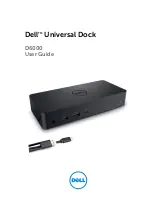
25 • Connecting Calibration Gas
Connecting Calibration Gas
The GAS 1 and GAS 2 fittings on the back of the docking station are designed to be
used with a calibration gas cylinder that is fitted with a demand flow regulator. The
AIR fitting may be used with a demand flow regulator and a cylinder of zero
emissions air, but this is not normally necessary since the docking station will
generally be in a fresh air area.
The type of calibration gas cylinder used for the GAS 1 fitting depends on the gas
sensors installed in the EAGLE 2. A 4-gas mix, LEL/Oxygen/CO/H2S, is used for the
GAS 1 fitting if the instrument being used with the docking station is a standard 4-gas
instrument or is a version that has less than 4 standard channels but still has an H
2
S
channel. If the instrument does not have an H
2
S channel, then a 3-gas mix, LEL/
Oxygen/CO, is used for the GAS 1 fitting. Although a 4-gas cylinder will work for an
instrument of any standard gas combination, if you have multiple 3- and 4-gas
instruments, you may want to keep a 4-gas cylinder and a 3-gas cylinder to help
preserve the charcoal filter that protects the CO sensor in instruments without an H
2
S
channel.
The GAS 2 fitting is intended to be used for special sensors (i.e. PID, TC, ESM-01,
etc.). If you have a special sensor installed (i.e. PID, TC, ESM-01, etc.), a special
cylinder for the target gas of that sensor needs to be used for calibration. For
example, if you have a standard 4-gas instrument plus a PID sensor, you will need
both a 4-gas cylinder and a cylinder of 10 ppm isobutylene for low range or 100 ppm
isobutylene for high range calibration. The isobutylene cylinder needs to be
connected to the GAS 2 fitting on the back of the SDM-E2. Similarly, if you have a
standard 4-gas EAGLE 2 plus an ammonia ESM-01 sensor, you will need a cylinder
of 10 ppm ammonia connected to the GAS 2 fitting on the back of the SDM-E2. If you
have a standard 4-gas EAGLE 2 plus a PID sensor and an ammonia ESM-01 sensor,
you will need both an isobutylene calibration cylinder and an ammonia calibration
cylinder. If you have an EAGLE 2 configuration for which a 5-gas cylinder is available
(ie. standard 4 plus SO
2
or standard 4 plus high range PID), you may use the 5-gas
cylinder and connect it to the GAS 1 fitting. The SO
2
or high range PID channel will
have to be assigned to GAS 1 (see “Setting the Gas Inlet Parameters” on page 22).
For instruments with 2 special sensors, the calibration cylinder for the first special
sensor channel (typically channel 5) needs to be connected to the GAS 2 fitting first.
During bump testing or calibration, the EAGLE 2 screen will prompt you to change the
GAS 2 calibration cylinder when it needs to calibrate the second special sensor
(typically channel 6). If one of the two special sensors has a target gas that’s in a
5-gas cylinder (ie. SO
2
or high range PID), no cylinder change will be required if the
5-gas cylinder is used and the appropriate channel is reassigned to GAS 1.
NOTE:
If your EAGLE 2 has an IR sensor installed, see “Appendix A: Bump
Testing and Calibrating EAGLE 2s with IR Sensors” on page 84 for a
brief description of operation specific to IR sensors.
















































